Affiliate links on Android Authority may earn us a commission. Learn more.
What is Android Auto and how does it work?
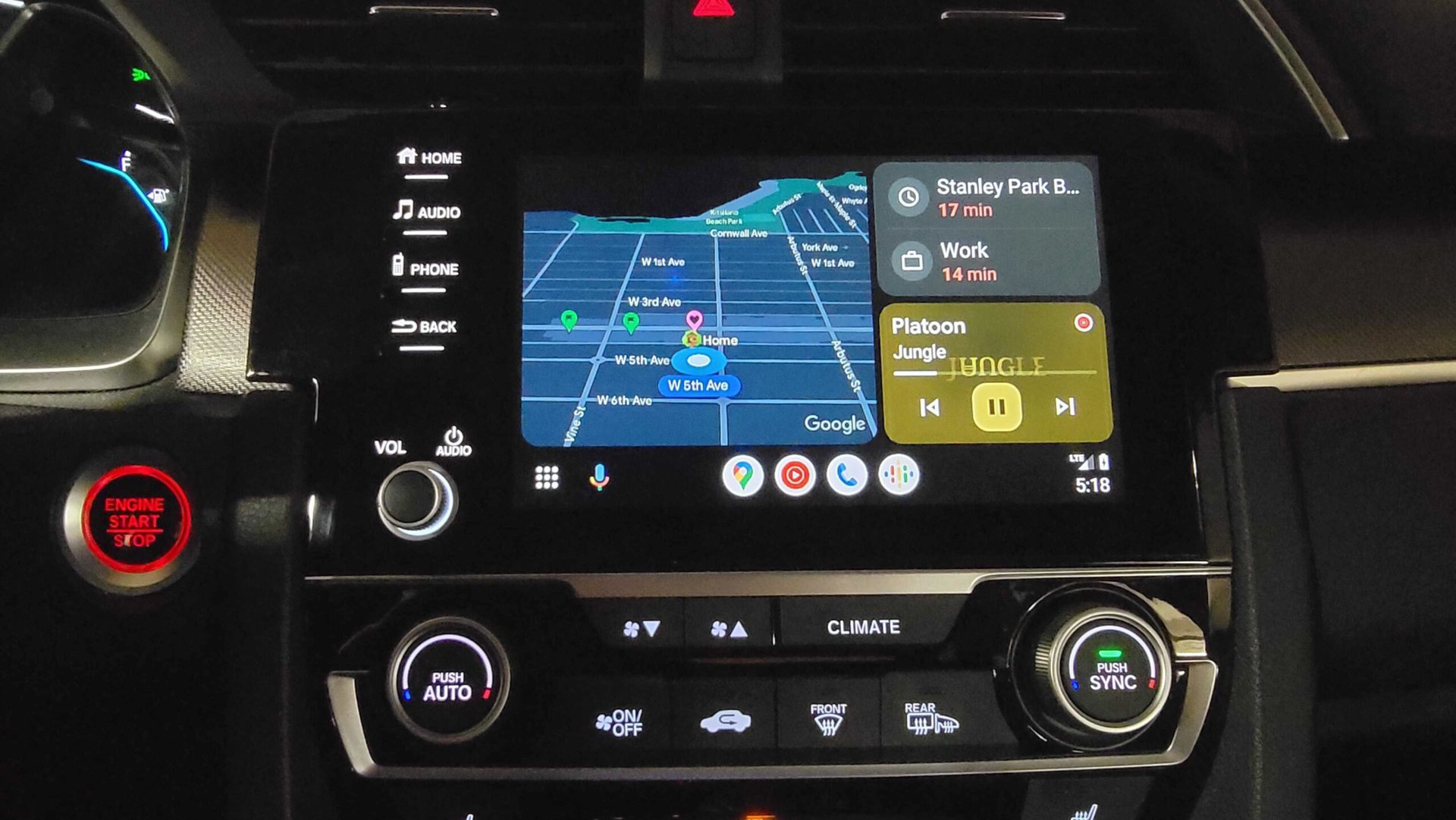
Android doesn’t just power your phones, tablets, and TVs. It can also power the dashboard of your car. You can connect your phone to your car’s display via Android Auto to access navigation tools, make hands-free calls and texts, listen to music, and more compatible apps while on the road. Here’s everything you need to know about Android Auto.
THE SHORT ANSWER
Android Auto is an app that brings your favorite music, media, and messaging apps to your car's dashboard. Once an Android device is paired with your car, you can access certain Android apps via your vehicle's touchscreen display and dashboard.
ARRIVE AT KEY DESTINATIONS
What is Android Auto?
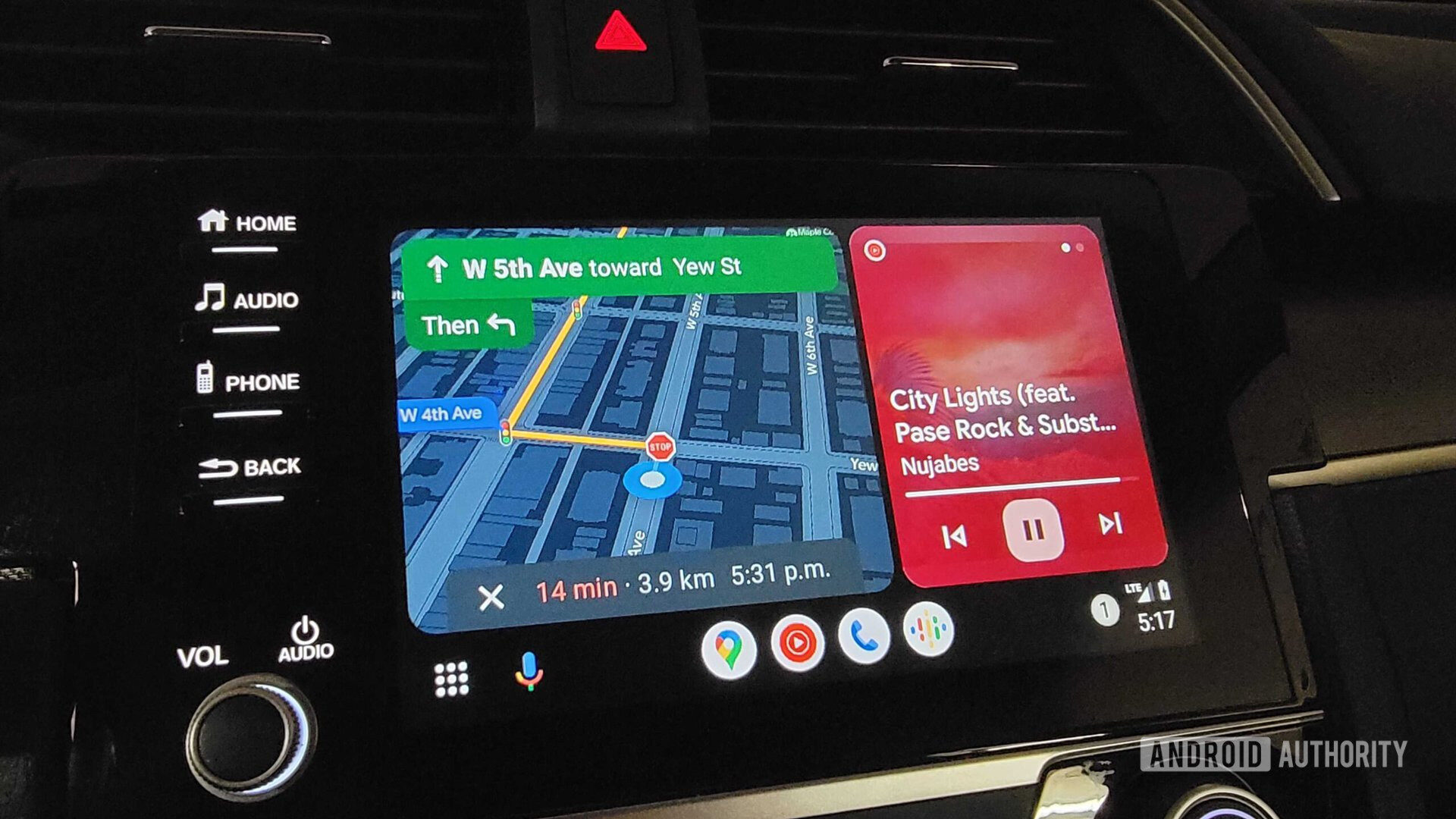
Android Auto is a mobile app developed by Google to mirror the experience of using an Android device on your car’s dashboard information and entertainment unit.
After pairing an Android device with the car’s head unit, you can access some apps on the vehicle’s display. Supported apps include GPS mapping and navigation, music playback, SMS messaging, and voice calls. The system supports both touchscreen and button-controlled navigation. However, hands-free operation through voice commands with Google Assistant is recommended to reduce driver distraction.
Frequent users can also participate in beta programs to test the functionality of new features and apps. If the beta program is full, make sure to update Android Auto to take advantage of all the latest features.
How does Android Auto work?
Android Auto work when you plug your Android smartphone into your car via a USB cable and connect your apps to your vehicle’s system via WI-FI or mobile data.
Here’s what you need to use Android Auto on your car display with a wired connection:
- An Android phone with Android 8.0 and up, an active data plan, and the latest version of the Android Auto app.
- A compatible car. Find out if your car or stereo is compatible with Android Auto.
- A high-quality USB cable.
Alternatively, wireless projection is compatible with Android 11, a Google or Samsung phone with Android 10, a Samsung Galaxy S8 or S8+ and above, or a Note 8 and above with at least Android 9.
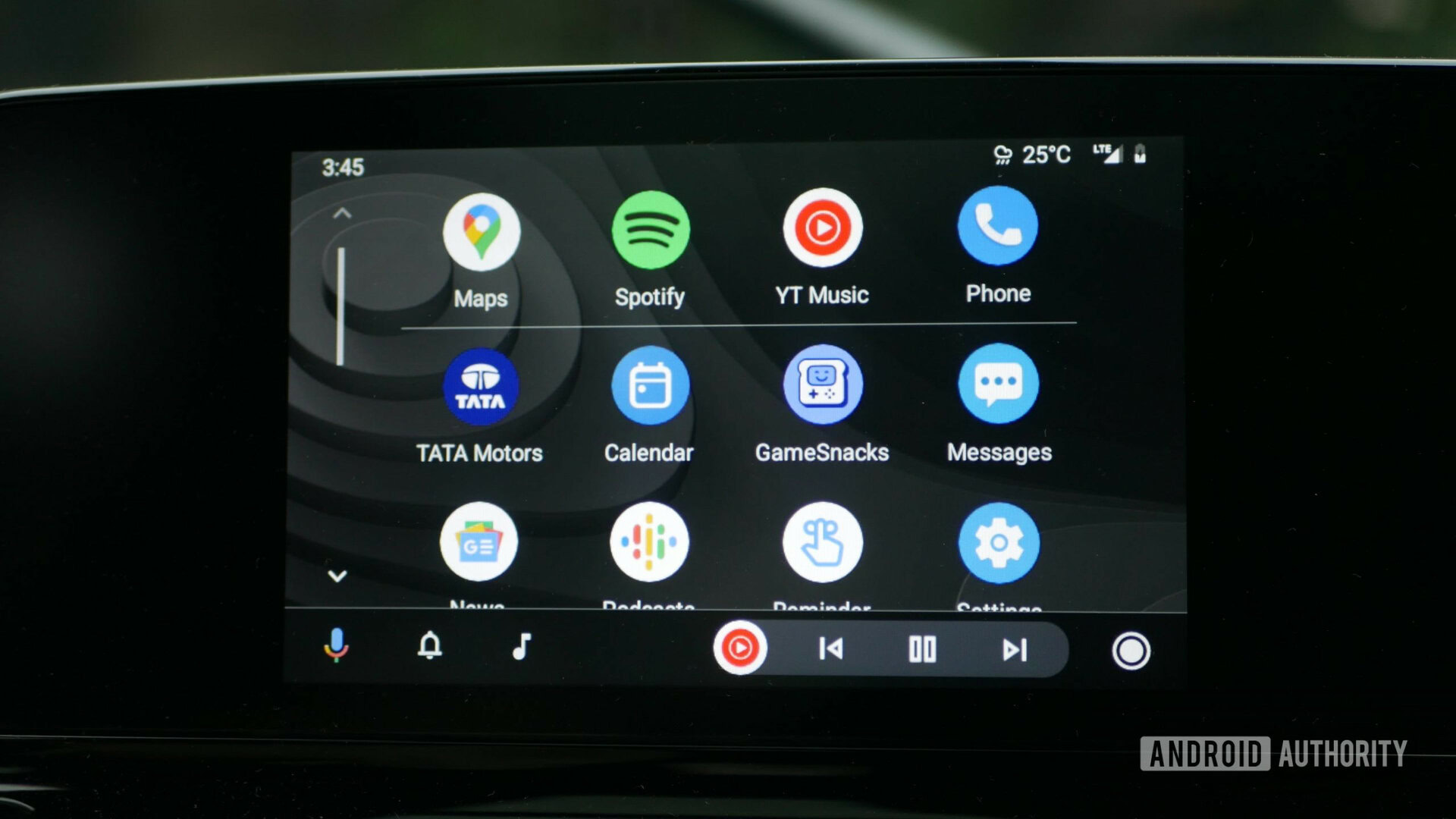
The app is easy to set up. Once you have to app downloaded to your phone, connect it to your car and tap the Arrow icon on your car’s display, then follow the instructions to get started. For step-by-step instructions, see our guide on connecting Android Auto to your vehicle.
Once synced, the navigation bar makes sit easy to control your connected apps with a few taps. Whether you’re about to turn right while listening to music or if you’re on a call and the route changes, you’ll always see what you need next.
What can you do with Android Auto?
Android Auto lets you keep your eyes on the road and your hands on the wheel. All you need to say is “Hey, Google” to ask for routes, play your favorite songs or check the weather. The features can be categorized into navigation, communication, and entertainment.
You can get real-time alerts for navigation with Google Maps, Waze, and other mapping apps. Google Assistant can even find gas stations along the way, look for EV charging availability, or book a parking reservation when you arrive. You can see it all on your car’s dashboard display, helping you navigate with turn-by-turn directions.
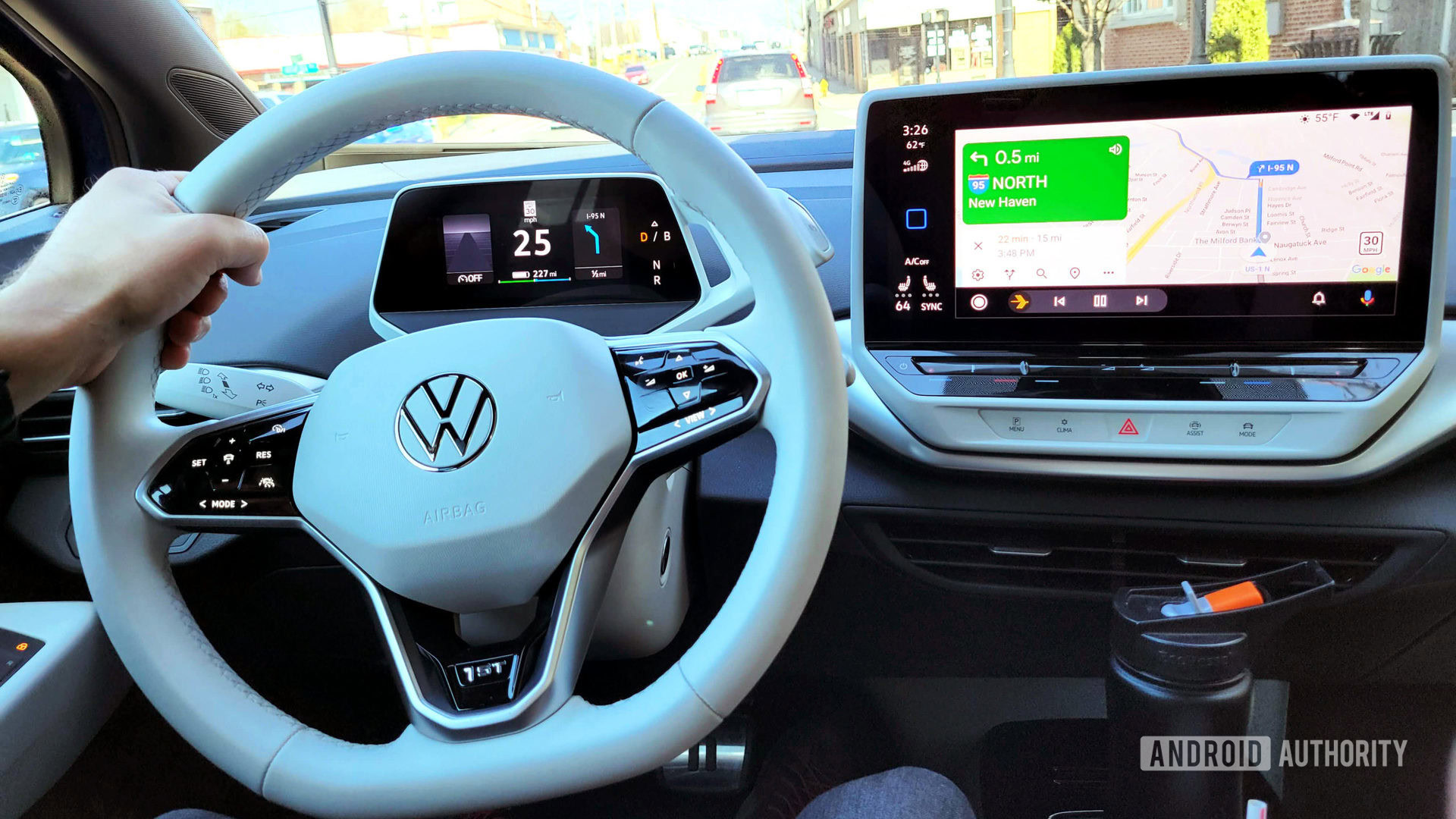
Communication is made easy and safe. If you receive a text, Google Assistant can read it aloud, and you can write back by talking. Driving becomes far less distracting when you can make calls or engage chat apps with your voice. You can also see what’s happening today across your calendars and tap any event to make a call or start navigating to your appointments.
Of course, there’s also plenty of entertainment to enjoy the ride. The app lets you take all the media on your phone on the road and control it with your voice. Switch between audiobooks, podcasts, or road-trip playlists from your favorite apps quickly by asking.
Does my car support Android Auto?
Most vehicle models made after 2016 will support Android Auto, but check your car model to ensure your vehicle is compatible.
Here’s a list of models from manufacturers that have confirmed wireless support:
- Acura 2022 models MDX, RDX
- Audi: 2022 models A3, A4, A5, A6, A7, A8, E-Tron, E-Tron GT, Q3, Q5, Q7, Q8 (2022 models)
- BMW: 2022 models 2 Series, 3 Series, 4 Series, 5 Series, 7 Series, 8 Series, iX, i4, X3, X4, X5, X6, X7, Z4 2021 models 4 Series 2020 1 Series, 2 Series, 5 Series, 6 Series, 7 Series, XE, X4, X6 2019 3 Series, 8 Series, X5, X7, Z4
- Buick: 2022 models Enclave, Encore GX, Envision
- Cadillac: 2022 models CT4, CT5, Escalade/Escalade ESV, XT4, XT5, XT6
- Chevrolet: 2022 models Blazer, Bolt EV, Bolt EUV, Camaro, Corvette, Equinox, Malibu, Silverado 1500, Silverado 1500 LTD, Silverado 2500/3500, Suburban/Tahoe, Trailblazer, Traverse
- Chrysler: 2022 models Pacifica
- Dodge: 2022 models Durango
- Ford: 2022 models Bronco, Edge, E-Transit, Expedition/Expedition Max, F-150, F-150 Lightning, Mustang Mach-E
- GMC: 2022 models Acadia, Hummer EV, Sierra 1500, Sierra 1500 LTD, Terrain, Yukon/Yukon XL
- Honda: 2022 models Accord, Civic
- Hyundai: 2022 models Accent, Elantra, Ioniq (excludes Ioniq 5), Kona, Kona EV, Palisade, Santa Cruz, Santa Fe, Sonata, Tucson, Venue
- Infiniti: 2022 models Q50, Q60, QX50, QX55, QX60, QX80
- Jeep: 2022 models Compass, Grand Cherokee/Grand Cherokee L, Wagoneer/Grand Wagoneer
- Kia: 2022 models Carnival, Forte, K5, Niro, Rio, Sorento 2021 models K5, Sorento, Seltos
- Lincoln: 2022 models Navigator, Nautilus
- Maserati: 2022 models Ghibli, Levante, MC20, Quattroporte
- Mercedes-Benz 2022 models EQS, S Class Saloon 2021 models EQS
- Porsche: 2022 models 911, Cayenne, Panamera, Taycan
- Ram: 2022 models 1500, 2500/3500, ProMaster
- Range Rover: 2022 models Range Rover, Range Rover Sport, Discovery, Defender
- Toyota: 2022 models Tundra
- Volkswagen: 2022 models Arteon, Atlas/Atlas Cross Sport, Golf GTI/Golf R, ID.4, Jetta, Taos, Tiguan 2021 models Arteon, Atlas/Atlas Cross Sport, Golf GTI/Golf R, ID.4, Jetta, Taos, Tiguan
If you are not driving any above cars, you could get the crowdfunded AAWireless dongle to use Android Auto untethered.
Lastly, if you are having problems with Android Auto, see our guide on how to fix them.
What is Android Automotive, and how does it differ from Android Auto?
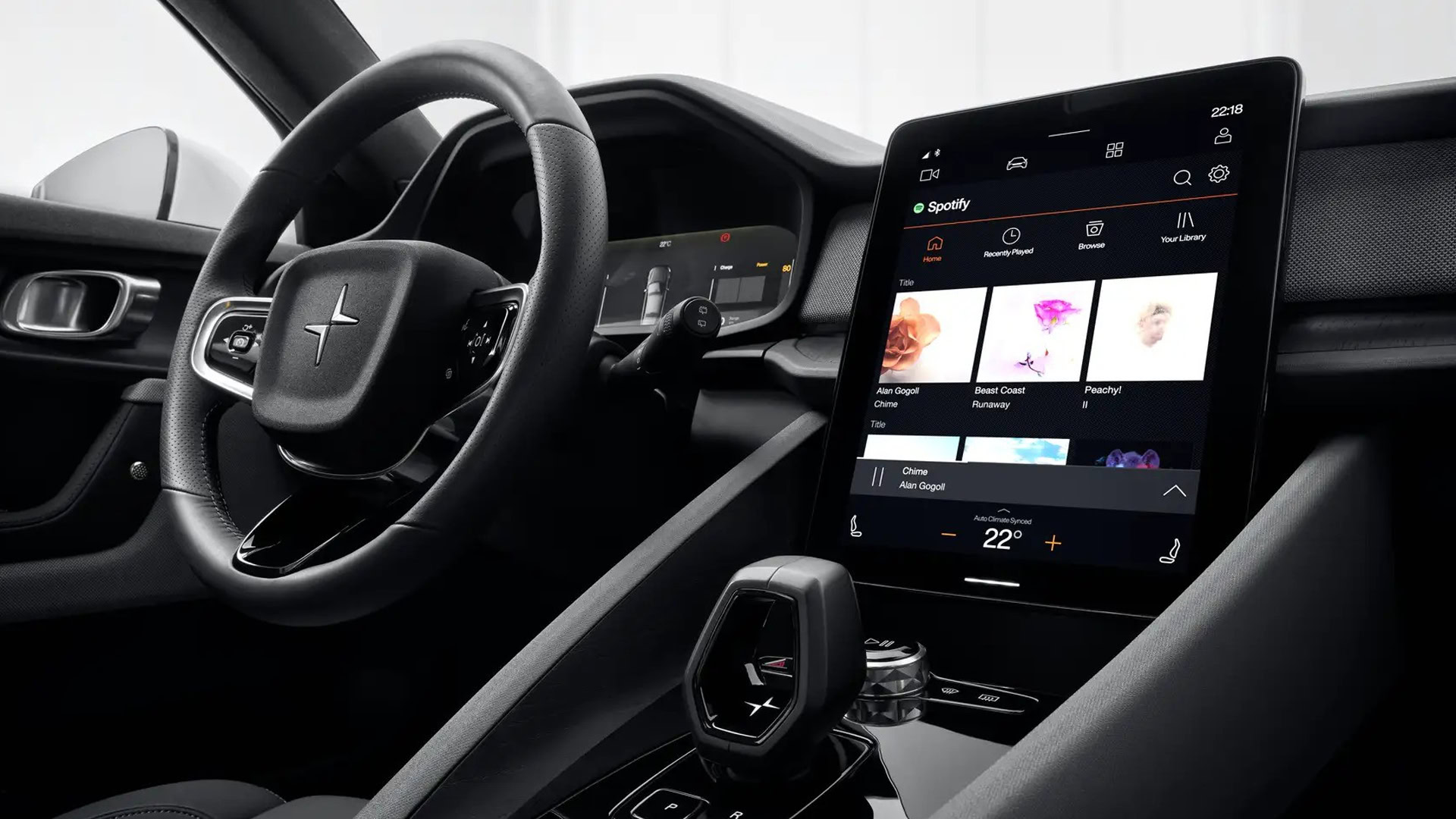
In contrast to Android Auto, Android Automotive (AAOS) is a complete operating system running on the vehicle’s device, not relying on a smartphone to operate. We know the terminology can be confusing, so here’s how they differ:
- Android Auto is a platform running on the user’s phone, projecting Android apps designed for in-vehicle use. to a compatible in-vehicle infotainment system over a USB connection.
- Android Automotive is an open-source operating system running directly on in-vehicle hardware. The platform allows companies to customize the infotainment experience without using Google Automotive Services, such as Google Maps to Google Assistant.
Companies now using AAOS include Volvo, Ford, GM, Lucid Air, Honda, and BMW.
FAQs
Android Auto is a mobile app developed by Google to mirror features from your phone to your car’s compatible in-dash information and entertainment unit. It allows you to use mobile apps for navigation, music playback, messaging, and voice-enabled apps through your vehicle’s system to help minimize distractions so you can stay focused on the road.
Certain Android devices and car models are compatible with wireless connectivity. See this section to find out if your car supports wireless connection.
While Bluetooth can be used for some functions like voice commands, Android Auto primarily requires a wired connection via a USB cable to connect to your car’s system. However, some newer car models do support wireless connections.
Android Auto is a mobile app that connects to your car from your smartphone. Download the Google Play Store app and use a USB cable to connect to your vehicle.
If you have a phone running Android 6.0 (Marshmallow) or later, it should be compatible. However, you must still download the app from the Google Play Store.
Download and install the app from the Google Play Store. Connect your Samsung device to your car using a USB cable. Some vehicles also support wireless connections. Follow the on-screen instructions to get started. You might need to give certain permissions for the app to run, but once set up, it should start automatically when your phone is connected to your car.
You can get Android Auto on your phone by downloading it from the Google Play Store. Go to the Play Store, search for the app, and tap Install.
Android Auto is compatible with the following Toyota vehicles.
- 4Runner 2020 and above.
- Aygo 2018 and above.
- Sequoia 2020 and above.
- Tacoma 2020 and above.
- Tundra 2020 and above.
- Yaris (Europe only) 2019 and above.
Download the app to your Android device and plug it into your car with a USB cable.
If you are having issues connecting the mobile app to your car, see our article on the most common problems and how to fix them.
Google has discontinued the Android Auto app for smartphones, making the app only available to use on car screens. You will still need your phone to connect to your car, but the app won’t work on your phone without a car any longer.
Google announced that Android Auto for phone screens is being phased out, and its functions will be integrated into Google Assistant’s driving mode. However, the app is still functional and actively used in compatible cars.